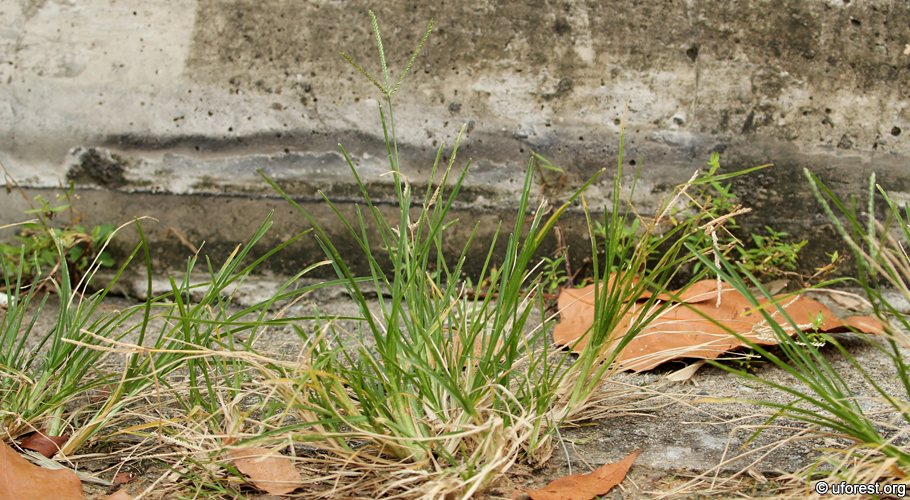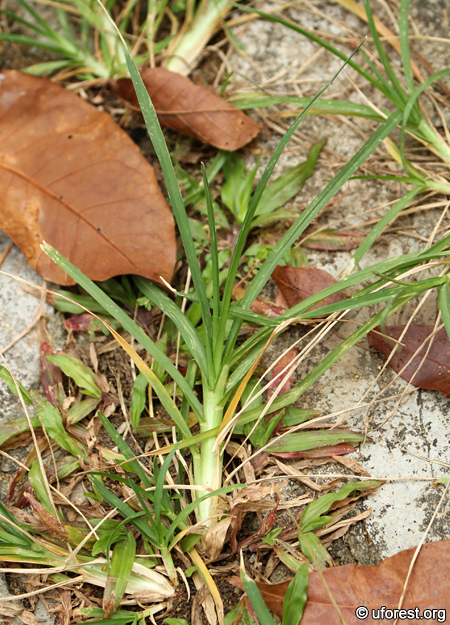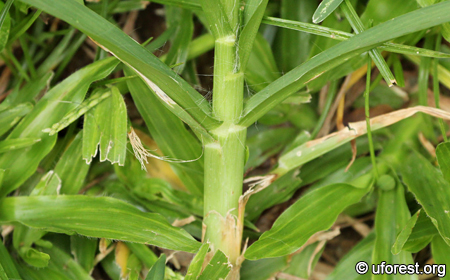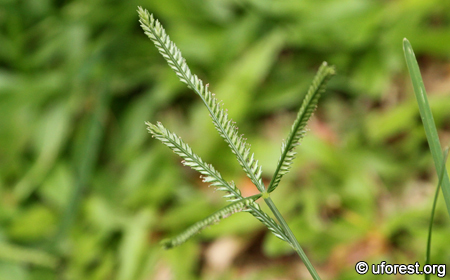Eleusine indica (L.) Gaertn
| Etymology | Genus | After Eleusis, a town in Greece |
|---|---|---|
| Species | India | |
| Family | Poaceae | |
| Synonyms | Cynosurus indicus L., Eleusine japonica Steud., Eleusine gouinii E. Fourn. | |
| Common Names | Goose Grass, Rumput Sambau | |
| Status | Exotic: Naturalised | |
| Form | Herb | |
| Native Distribution | Africa, East Asia, India, and Indochina | |
Diagnostics:
Eleusine indica is a very common weed of lawns and shrublands. The leaves are straight and erect, and slightly smoky green in colour. The base of the blade is folded, and randomly intersperse with white hairs of about 5mm. As always for grasses, the inflorescences are easily recognisable, with 3-4 finger-like erect green projections extending from a point.
Interesting Facts:
The Goose Grass can reproduce prolifically and a single individual is said to be able to produce 140,000 seeds (Chin & Raja, 1979). It has been reported to be resistant to a few herbicides like aryloxyphenoxypropionate, cyclohexanedione, and glyphosate (Lim & Ngim, 2000).
The Goose Grass growing from a carpark lot.

Form of the grass showing its culm and blades.

Folded leaf base. Note also the randomly dispersed white hairs.

The green spikes of the inflorescence.

The tiny florets close-up.
References
Chin HF & Raja H. (1979) Ecology and physiology of Eleusine indica seeds. Proccedings of Asian-Paciific Weed Science Society Conference, 7: 115-119.Lim JL & J Ngim. (2000) A first report of glyphosate-resistant goosegrass (Eleusine indica (L) Gaertn) in Malaysia. Pest Management Science, 56: 336-339.
Author: Siyang
Posted: 2013-04-29 / Modified: 2017-12-25
Google Ads